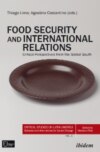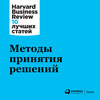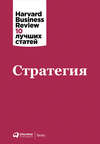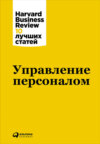Читать книгу: «Food Security and International Relations», страница 2
4 Agrifood relations: from a local to global capitalist system
Taking food as the central axis of human relations, the chapters in this collection raise and refocus the question of how to feed people in a world divided into nations, states and social classes. Indeed, one dimension common to all the texts is the international theme. This does not mean, however, that the analysis is restricted to the level of state relations. In contrast, the authors in this collection acknowledge that to address the topic of food, it is essential to remember that the biological constitution of the human being tethers us to the need to harvest from nature and eat in order to produce and reproduce. Every single day. How this occurs, however, is socially constructed, from relationships between neighbors to interactions among nations. Each chapter in this collection offers its own vision of how socially constructed aspects affect food and nourishment, never letting us forget that everything could be different. By identifying actors and examining relations, institutions and structures, we come to understand that agrifood relations are always in motion. Few would doubt that there is creative potential for devising a solution to food and nutrition insecurity. The challenge, however, is developing a solution that is politically achievable from the local to the global levels, passing through the international level.
The objective of this book is therefore to deepen the connection between international relations and food. While the texts share a common axis, the angle changes according to the chapters, giving the reader the opportunity to explore the subject through political economy, political science, law and international relations. The contents of the book’s chapters are divided into three groups: i) the humanitarian and ethical importance of solving the problem of hunger; ii) the strategic relevance for states of achieving food security, including via food sovereignty; and iii) the nature of the food security problem in a world where production and distribution are guided by the rationalism of capitalism.
In this sense, the chapter of Praveen Jha, Santosh Verma, Manish Kumar is a great opportunity to start with the analytical chapters of the book, since it covers these dimensions. The authors relate the beginning and deepening of neoliberalism in India with the serious food problems that seem to be getting worse and worse in this country. In fact, they mention that the characteristics that development has had since the neoliberal stage in India have strongly affected the supply of adequate food for the population. Moreover, all this took place while the country lived a stage of strong GDP growth. The drivers the authors mention to explain this are: the orientation of production to exports, the focalization of food distribution policies, the decline in income of the rural and urban population, the expulsion of peasants from the land, the cutback of public expenditures in the agricultural sector.
Dialoguing with the issues mentioned earlier, Ana Carolina Oliveira and Maria Luiza Feitosa emphasize the importance of considering food to be a human right as well as the importance of public policies for achieving this right. The authors highlight the role that states should play in guaranteeing the right to food, which does not imply only secure access to food according to cultural guidelines but also individual emancipation and autonomy in the consumption and production of food. The authors thus contribute to the discussion of human security, as they consider food sovereignty to be a matter that goes beyond food security, rather than the reverse.
Note that the solution poses a challenge to the idea of “one Humanity”: dividing in an attempt to achieve solidarity? That is, does sovereignty need to be valued as an element that makes communities independent, in order for those communities to better feed themselves in the face of transnational economic forces? Whatever the answer, it seems foolish to disregard national constitutions as a privileged instrument for guiding the adequate nourishment of the population. The trend in this regard is encouraging: several countries have incorporated the HRAF into their constitutions.
One example of the potential international interference in national agrifood systems is offered by Thiago Lima, Erbenia Lourenço and Henrique Menezes. They discuss the reasons behind international food aid from the US to African and Latin American countries containing genetically modified organisms. Although there are humanitarian motivations for the donations, there are also clear economic interests and a disrespect for the recipients’ preferences. Certain international forums and dispute settlement environments may thus play a key role in shifting dysfunctional agrifood systems towards food sovereignty.
Indeed, it is not surprising to find that trade agreements and international organizations can reinforce the hierarchical relationship among countries in the North-South direction, keeping the latter vulnerable and dependent. However, international agreements and organizations can also be mobilized to spread solidarity among countries.
South-South cooperation to promote food and nutrition security is one example. In this context, the UN World Food Program’s Centre of Excellence against Hunger, established in Brazil, excels at encouraging international cooperation in school food and nutrition. Clarissa Dri and Andressa Silva examine the Centre’s actions through the principles of South-South cooperation, in terms of the autonomy of the countries involved and of strategic relations beyond the economic sphere. It is one example of how food security is more political than economic, as it does not depend as heavily on a country’s ability to produce food but rather on deciding which food to produce and how to distribute it. South-South cooperation can therefore be a strategy for solidarity, which reinforces sovereignty.
In this vein, Felipe Albuquerque explains how policies to fight against hunger and poverty implemented in Brazil in the 2000s (at least until 2016) created a repertoire of success that enabled Brazilian diplomacy to make the country a relevant power for the region and for other developing countries. Throughout the text, Albuquerque shows how changes in the general direction of the economy (from President Lula to President Roussef and then to President Temer) impacted the country’s external role as an international engine for policies to fight against hunger. This role is called into question by the movement that ousted President Dilma Roussef and brought her vice president, Michel Temer, to power.
A crucial food for Latin America is maize, and the history of its uses has much to do with the relations that Latin American countries have with developed countries. In their chapter, Andrea Santos Baca and Julia Cristina de Sousa e Berruezo show the role of maize in the world food market and the constructed image of it as a second class food, in a colonial attempt to sweep away the customs of the local people of Latin America and impose a mode of feeding similar to the European one, at the same time as spreading European uses of it worldwide. Furthermore, as the authors show, this crop has become one of the first to go through a process of hybridization and genetic modification, which responds to the “negative” image of food for animals (and not humans) that the Europeans gave to maize, as opposed to the images of wheat or rice as typically human foods. In other words, the apparent “advantage” of maize as a genetically modified food hides the value that the colonizing culture placed on it.
The relationship between economics, politics and food security is examined more deeply in the chapter by Agostina Costantino. This chapter brings us closer to the end of the book through a dialogue with the opening chapter on food security in India. The author reveals the irrelevance of Argentina’s image as the “world’s breadbasket,” given the presence of thousands of undernourished or malnourished people in the country. Costantino shows how structural reforms implemented since the late 1970s—and more intensely since the 1990s—contributed to pushing aside the objective of food security, directing the entire economic structure towards the production of a (small) number of foods for export. In terms of international relations, this chapter offers a discussion of land grabbing by investors and foreign countries, which exacerbates food security and even calls the country’s food sovereignty into question.
Closely related to the previous one, the chapter of Sol Mora deals with the general problem developed by Agostina Costantino, but in two specific case studies of Chinese investments in Argentina: an agri-food project and the building of an irrigation aqueduct. In both cases, it is about thousands of hectares that the Asian country intended to control in Argentina. Mora’s hypothesis is challenging because most studies on land grabbing of national cases tend to focus separately either on the role of nation states, or on the social conflicts that have arisen, or on the interests of companies when setting up in other countries. This work not only addresses the problem comprehensively by including these three actors through the concept of governance, but also includes a protagonist not always considered in these studies: sub-national states, which are ultimately the ones that shape the relations that national governments end up having with other countries. The examples of Sol Mora show the effects that the current policy of relations with China can have on food security and the environment in the Southern Cone.
---//---
The biological constitution of the human being seems to be a perpetual prison or an eternal reminder that we are not only fragile but also intimately connected to nature. Developing bonds of solidarity not only among human beings but also with nature itself is a fundamental question. Along these lines, it is essential to understand the challenges and opportunities found in the context of international relations, in order to shape a political force capable of guaranteeing the HRAF for all people. We cannot accept, two decades into the twenty-first century, that “one in three women of reproductive age globally is still affected by anemia.” Such data reveal the lack of care for our today and tomorrow, as anemia has “significant health and development consequences for both women and their children” (FAO, 2018, p.16). It is necessary to build agrifood systems that solve these types of problems. The further we move in this direction, the closer we come to glimpsing “one Humanity,” not in the distressing sense of the Anthropocene but in the urgent sense of social justice.
The International Agri-Food Studies Network (Rede de Estudos Agroalimentares Internacionais—Redagri) and its collaborators wish everyone happy reading and lively debates!
References
ALKIRE, S. A Conceptual Framework for Human Security. CRISE Working Paper, Oxford, 2003.
BURKE, M. Climate Effects on Food Security: An Overview. In: BURKE, L. &. Climate Change and Food Security: Adapting Agriculture to a Warmer World. New York: Springer Dordrecht, 2010.
CHADE, J. O mundo não é plano. São Paulo: Saraiva, 2009.
CLAPP, J. Food Security. In: COOPER, H. &. T. The Oxford Handbook of Modern Diplomacy. [S.l.]: Oxford, 2013.
EVANS. Human Security and East Asia. Journal of East Asian Studies, 2004.
FAO. The State of Food Security and Nutrition in the World 2018. Building climate resilience for food security and nutrition. Rome, FAO, 2018.
______. A statement by FAO Director-General José Graziano da Silva. FAO 2015. Available at: <https://bit.ly/2pQlFhv> Accessed 10 Oct. 2018.
______. Trade reforms and food security. FAO. Roma. 2003.
G1. 1% mais ricos concentra 28% de toda a renda no Brasil, diz estudo. Portal G1. 14 set. 2017. Available at: https://glo.bo/2yDlOXn. Accessed 14 Oct. 2018.
HAMPSON et al. Madness in the Multitude: Human Security and World Disorder. Ottawa: Oxford University Press, 2002.
ICRC. Minas antipessoal: um panorama sobre o problema. Comitê Internacional da Cruz Vermelha, 2018. Available at: <https://bit.ly/2QL4V6G>. Accessed 17 Sept. 2018.
KALDOR, M. Human Security. Cambridge: Polity, 2007.26
KRAUSE, K. The key to a powerful agenda, if properly defined. Security Dialogue, p. 367–368, 2004.
KRAUSE, K. Critical perspectives on human security. In: MARTIN, M.; OWEN, T. Routledge Handbook on Human Security. New York: Routledge, 2014. p. 76–93.
LEÃO,M; MALUF, R. A construção social de um sistema público de segurança alimentar e nutricional: a experiência brasileira. Brasília: ABRANDH, 2012.
MACFARLANE, S. N.; KHONG, Y. F. Human Security and the UN A Critical History. Bloomington: Indiana University Press, 2006.
MCMICHAEL, P. Global development and the corporate food regime. Prepared for Symposium on New Directions in the Sociology of Global Development. XI World Congress of Rural Sociology. Trondheim: [s.n.]. 2004.
MCRAE, R; HUBERT, D. Human Security and the New Diplomacy: Protecting People, Promoting Peace. Montreal: McGill-Queen’s University Press, 2001.
OWEN, T. The Critique That Doesn’t Bite: A Response to David Chandler’s ‘Human Security: The dog that didn’t bark’. Security Dialogue, p. 445, 2008.
RBA. Brasil pode voltar ao Mapa da Fome. ONU faz campanha pela segurança alimentar. Rede Brasil Atual. 14 mar. 2018. Available at: <https://bit.ly/2Aa4w8s>. Accessed 14 Oct. 2018.
ROCHA, R. M. A. O envolvimento internacional em questões de Justiça de Transição. Revista de Economia e Relações Internacionais, São Paulo, Jul. 2011. 107–127.
______. O histórico da segurança humana e o (des)encontro das agendas de desenvolvimento e segurança. Rev Carta Internacional, 2017. p. 104–129.
SEN, A. Desenvolvimento como Liberdade. São Paulo: Cia das Letras, 2008.27
TADJBAKHSH, S; CHENOY, A. Human Security Concepts and Implications. Abingdon: Routledge, 2007.
TADJBAKHSH, S. Human Security: Concepts and Implications with an application to Post-Intervention Challenges in Afghanistan. Les Études du CERI, 2005. 117–118.
TAKASU, Y. Japan and Networked Human Security. In: MARTIN, M. &. O. T. Routledge Handbook of Human Security. Oxford: Routledge, 2015. p. 239–250.
UL HAQ, M. Reflections on Human Development. New York: Oxford University Press, 1995.
UNDP. Human Development Report 1993: People’s participation. New York. 1993.
______.. Human Development Report. An Agenda for the Social Summit. Oxford. 1994.
VIA CAMPESINA. Our World Is Not For Sale. Priority to Peoples’ Food Sovereignty. Bulletin, November 1, 2001. Available at: <https://bit.ly/2yCpKdi> Accessed 10 Oct. 2018.
ZIEGLER, J. Destruição em massa: geopolítica da fome. São Paulo: Cortez, 2013.
1 This reflection is based on DANOWSKI, D. and CASTRO, E. V. Há mundo por vir? Ensaio sobre os medos e os fins. Florianópolis, Instituto Socioambiental, 2014.
2 A narrower approach focuses on the human consequences of armed conflict and the dangers they present to individuals—primarily civilians—by repressive governments and situations of state failure. This approach has a greater influence on the security agenda and focuses on threats to physical integrity rather than incorporating issues related to human development and empowerment, as in the earlier approach. Modern conflicts reflect a high level of civil wars and state collapse, resulting in a high rate of civilian victimization and displacement, particularly for women and children (EVANS, 2004; KRAUSE, 2004; MACFARLANE & KHONG, 2006)
3 The HDR tracks and monitors the progress of humanity and ranks countries with its Human Development Index (HDI). The UNDP also produces Regional Reports, which propose actions that would enable each country to achieve human development (UNDP, 2015; UL HAQ, 1995).
4 Both instruments of international law were made possible by the Canadian-led coalition and the advocacy efforts of the Human Security Network (HRH), comprising Austria, Canada, Chile, Costa Rica, Greece, Ireland, Jordan, Mali, the Netherlands, Norway, Switzerland, Slovenia and Thailand, with South Africa as an observer. Japan was invited but declined to participate due to the emphasis on humanitarian intervention and the constitutional restriction on using force without authorization from the UN Security Council.
CHAPTER 2
Contours of Food Security Challenges in Neo-liberal India
Praveen Jha1, Santosh Verma2, Manish Kumar3
Introduction:
The fact that since the early 1960s, global agricultural production has approximately tripled is well known. But in spite of such an increase in output, food security has remained a serious challenge in many countries across the world, partly due to unevenness in agricultural growth itself, but also on account of other important policy measures. Thus as per the current estimate, close to almost 800 million persons across the globe are reported to be suffering from chronic hunger, mostly in global South, along with many more being malnourished, and close to two billion suffering from micronutrient deficiencies. In short, trajectories of agricultural growth and policy regimes to address the food security have been inadequate and seriously deficient across many countries, particularly, in the so-called developing world.
As is often acknowledged, the four proximate pillars of food security are: availability, access, utilisation and stability, which depend fundamentally on overall macroeconomic policy regimes. Further, it is widely recognised that food availability at the macro-level cannot be equated with the food security at the household/individual level, and desirable outcomes can hardly be achieved by relying entirely on market processes. There is huge evidence from across the world, including from the so-called developed countries, that a variety of critical public interventions are important in ensuring food and nutrition security (Dreze and Sen, 1989; Jha and Acharya, 2016). Given such a backdrop, the ascendancy of neo-liberalism since the 1970s, which in large parts of the world has resulted in significant compression of policy spaces for public intervention, several challenges have come to confront the objectives of adequate and assured food security.
Turning to India, as is well acknowledged, even the elementary markers related to food security paint a grim picture. For instance, as per the latest Global Hunger Index (GHI) Report (2019), out of 117 countries, which were surveyed, India has an alarmingly low rank of 102, much below some of its relatively poorer (in terms of per capita income) neighbours in South Asia, such as Nepal, Bangladesh, Pakistan. As it happens, this is in spite of reasonably robust GDP growth rates for almost four decades, in fact, second only to China which accounts for the fastest average GDP growth rates since the early 1980s, and has almost managed to banish hunger. This clearly tells us that relying simply on GDP cannot be a guarantee for ensuring even freedom from hunger, not to speak of food security. As we know from the huge and burgeoning literature on the subject, there are multiple correlates, economic-social-political, etc., of a robust and secure food system. Changes during the era of neoliberalism have created several adverse processes and mechanisms that have contributed to ongoing stress on the food front in a large number of countries, including India.
This paper seeks to investigate, in a political economy framework, some of the major causes underlying the deeply worrying food scenario in India. In particular, we examine important elements of the global and national economic policy architecture, which have been critical in shaping the overall context of the food system in the country. Growing internationalisation of food regime, e.g., through WTO architecture, several multilateral/regional/bilateral treaties and conventions, and increase in power of multinational corporations to shape such a regime to their advantage, are among the most obvious ‘external’ factors that we need to take note of. Further, important constraints on national/domestic macro-economic policy space and autonomy, which again have important organic linkages with neo-liberalism and the above noted ‘external’ factors, need to be underscored for an adequate understanding of the current challenges on the food front. These include, inter-alia, compression of public expenditure in general and provisioning for food, (for instance through public distribution systems), in particular, move towards cash transfers, squeeze of support for agriculture and rural development through multiple channels such as adequate support prices, subsidies etc., and worsening of livelihood and employment prospects due to the nature and structure of the growth trajectory itself.
The paper engages with the dialectics underlying the above noted international and domestic correlates, which impinge on the issues relating to the food system in contemporary India. Given that the theme has a vast canvas and a range of complex connected themes that are relevant for any such discussion, we have had to be selective in focusing on only a few critical issues. The paper draws primarily on the available secondary information to provide a sketch of the current challenges and some policy reflections.
Начислим
+63
Покупайте книги и получайте бонусы в Литрес, Читай-городе и Буквоеде.
Участвовать в бонусной программе




















